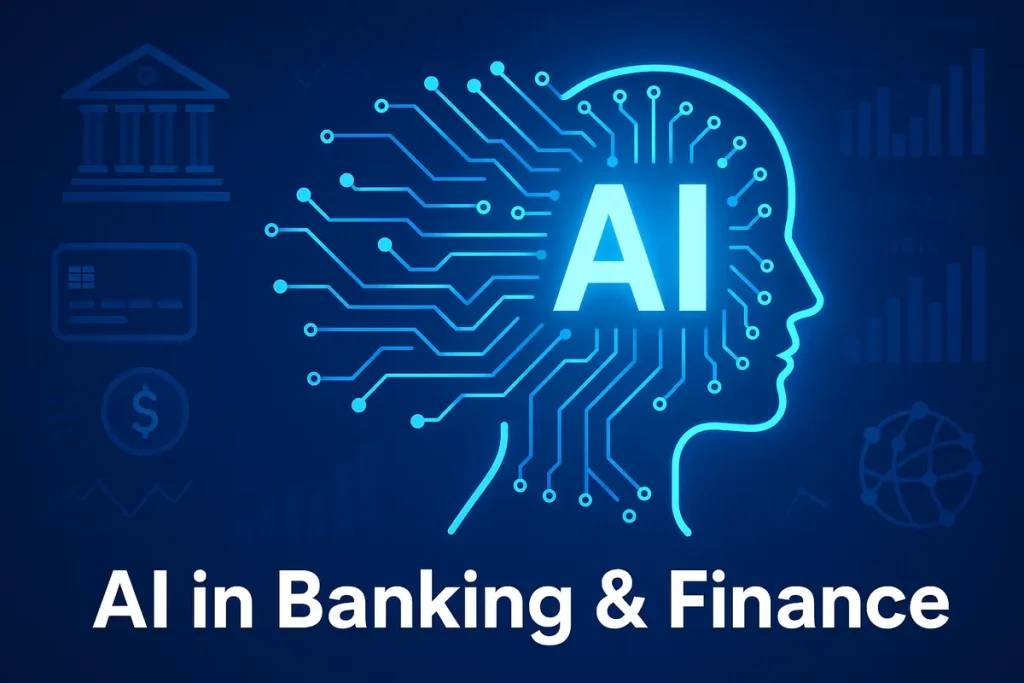Generative AI is rapidly reshaping the financial industry—from fraud detection to personalized services—driving a market shift expected to soar from $1.29 billion in 2024 to $21.57 billion by 2034. With a 31–38 % CAGR projected across various studies , financial institutions are investing heavily in this transformative technology.
Why the Surge in Generative AI?
-
Unmatched Growth Trajectory: From less than $2 billion in 2024 to nearly $14 billion by 2032 , North America leads adoption, with Asia–Pacific poised as the fastest-growing region .
-
Real-time Fraud Detection: AI-powered tools rapidly analyze transaction data for anomalies, reducing fraud exposure and enhancing compliance.
-
Personalized Financial Services: Generative AI is powering tailored banking—think chat assistants, wealth advice, and borrower insights—reshaping the customer experience.
Leading Use Cases of Generative AI in Finance
-
Automated Advice & Wealth Management
Large banks like JPMorgan (Quest IndexGPT), Morgan Stanley, UBS, and fintechs such as Wealthfront, integrate AI for portfolio suggestions, tax planning, and investment insights. Research shows roughly half of US consumers now use ChatGPT‑style tools for financial guidance—and 96 % report positive outcomes. -
Fraud Detection & Compliance
Financial institutions embed generative AI to detect fraud, monitor illicit behavior, and analyze KYC/AML data automatically. -
Deal Origination & Document Automation
On Wall Street, firms like Goldman Sachs and Morgan Stanley use AI to draft IPO documents in minutes, analyze contracts, and prepare pitchbooks, eliminating routine junior-staff tasks. Executives estimate junior roles could shrink by 10–30 %. -
Customer Service & Personalization
Chatbots and virtual assistants in retail banking leverage AI for seamless interaction, offering 24/7 advice, prompt responses to inquiries, and risk assessments .
Generative AI Challenges & Considerations
-
Workforce Impact: Yes, generative AI will automate many entry-level roles. However, jobs centered on client relationships, strategy, and oversight remain secure.
-
Systemic Risk & Regulation: Concerns arise around algorithmic herding on Wall Street, as repeated AI strategies may amplify market moves and create systemic vulnerabilities.
-
Ethical Use & Oversight: Although AI models accelerate analysis, human oversight is vital to manage biases, ensure compliance, and verify outputs .
From Pilot to Core Structure
-
Widespread Deployment: With six in ten banks prioritizing generative AI investments, broader rollout is imminent.
-
Pioneers Reaping Rewards: Early adopters like Goldman Sachs, JPMorgan, and UBS signal accelerating transformation.
-
AI as Strategic Imperative: Leaders using generative AI strategically—not just tactically—will gain significant competitive advantage.
Generative AI Is Here to Stay
Generative AI is reshaping banking—offering profound gains in fraud prevention, personalized services, document automation, and cost efficiency. While its integration may reduce traditional staffing, it also elevates the industry’s need for higher-level skills and oversight.
With a projected market explosion to more than $20 billion by 2034, institutions must act swiftly: move from pilots to strategic deployment, ensure regulatory readiness, and champion a human-AI collaboration model.


